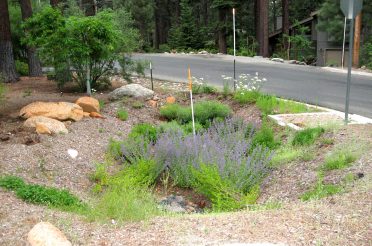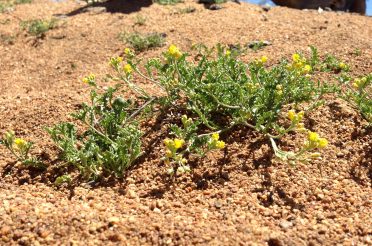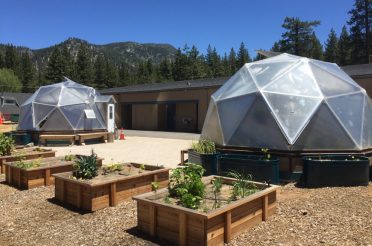Stewardship opportunities are all around us. NTCD always strives to conserve the natural environment through teaching responsible use and sustainable practices. One of the ways we promote conservation is by encouraging Tahoe residents to become stewards of our natural environment. Through conserving the environment out your door, you help keep Lake Tahoe the place we love to play.
Featured Projects
Backyard Conservation
Here are a few ways you can be stewards of our backyard:
Invasive species are non-native to the environment they are found and cause detrimental environmental or economic harm. They grow aggressively, spread quickly and choke out native and/or other desirable plants from your neighborhood. They typically have a spreading nature and lack natural predators. These traits enable them to dominate entire landscapes
NTCD works with other local organizations to help control or irradiate these unwanted invaders.
Invasive weeds decrease wildlife habitat and increase soil erosion and stream sediment, which is damaging to water quality.
Some common invasive weeds in the Lake Tahoe Basin area include:
Bull Thistle
Spotted Knapweed
Yellow & Dalmation Toadflaxes
Scotch Broom
Perennial Pepperweed
You can learn more about terrestrial invasive weeds through Lake Tahoe Basin Weed Coordinating Group.
The Tahoe Basin works hard at keeping aquatic invasive species out of our lake. The Tahoe Boat Inspection Program is our 1st line of defense in keeping out zebra and quagga mussels; a major invader that causes extreme environmental and economic damage. But a few have made the way into our blue lake. To combat these, numerous projects have been initiated with the goal of controlling their growth.
Check out the Tahoe Resource Conservation District Aquatic Invasive Species page for more info.
Living in a fire prone area has its responsibilities. Learning how to keep your property protected from wildfire is important part of living in Tahoe.
Prior to European-American settlement, much of the Lake Tahoe Basin burned on average of every 5 to 18 years. Because these areas burned so often, large amounts of wildfire fuels could not build up. These low-intensity fires thinned out young trees and shrubs and also reduced the buildup of deep layers of pine needles, leaves, and twigs. As a result, the forest was dominated by patches of large, mature trees with a sparse understory. Without these frequent fires, Tahoe’s forests have become overgrown and put us at high risk for high intensity fires that destroy neighborhoods, impact watersheds and take human lives. Therefore, it is important to implement Defensible Space practices to increase the likely hood of your home’s survival.
Here are some ways you can protect your home:
- 0-5 foot zone: Noncombustible Area
- Keep free of woodpiles, wood mulches, dead plants, leaves and pine needles and flammable shrubs.
- Use only low-growing non-woody irrigated vegetation, low growing shrub specimens, rock mulches or hard surfaces in this zone.
- Remove lower tree limbs and limbs within 10 feet of chimneys, houses, decks, power lines and propane tanks.
5-30 foot zone: Lean, Clean and Green
- Thin out thick shrubs to specimens or small groups of vegetation and remove flammable debris.
- Keep lawns mowed and shrubs trimmed.
- Remove fallen pine needles and leaves every spring (“Rake in the spring, let them FALL in the fall.”)
- Use noncombustible surfaces for walkways, patios and driveways.
*Page content adapted from “Living With Fire in the Lake Tahoe Basin”
Radon is a naturally occurring gas that is odorless, tasteless and colorless. It is produced by uranium breaking down in soil water and rock. Uranium is found in all soils, but granite holds a higher concentration than most. When this radioactive gas enters buildings, it can accumulate and cause health issues. Radon is the second leading cause of lung cancer and breathing it over extended periods of time can cause increased health risks. Finding out if your home contains elevated levels of radon can be done through test kits that are very user friendly.
Nevada locations offering Radon Test Kits
For more information check out UNCE’s website


